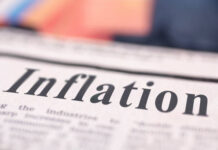The CAC index has inched higher in the Monday session. Currently, the index is currently trading at 5156.30 and is down 0.27% on the day. On the release front, Eurozone Sentix Investor Confidence edged up to 28.4, above the estimate of 28.1. There are no French events on the schedule. On Wednesday, the Eurozone releases Industrial Production and Fed chair Janet Yellen will testify before the House Financial Services Committee.
French president Emmanuel Macron ran on a campaign of political and economic change, and the French government has acted quickly, promising to lower its budget deficit to the 3 percent of GDP. The 3 percent rule is required by the EU, but Brussels has chosen to turn a blind eye to the many members who run deficits above 3 percent. This move sends a message to the ECB that France is serious about economic reform. The French government is also eager to take advantage of Britain’s departure from the European Union. The government wants to project a "finance-friendly" image, which is critical in France’s efforts to lure financial sector jobs which are being relocated from London to the continent. On Tuesday, Prime Minister Edouard Philippe told a banking conference in Paris that he wants the city to become Europe’s main financial hub after Brexit. This will be a tall order, as Frankfurt will likely be the most attractive choice for German and other companies that are downsizing their operations in London. Still, Philippe’s comments underscore that France is looking for a bigger role on the international scene, and Brexit is a unique economic and political opportunity for Macron.
There was good news on the US employment front, as Nonfarm Payrolls rebounded in June, climbing to 222 thousand, its second highest gain in 2017. Although the markets reacted positively to the solid Nonfarm Payrolls report, expectations of a third rate hike in 2017 are tepid. A rate increase in September is very unlikely, with the odds pegged at just 13%, according to the CME Group. As for December, the likelihood of a rate hike is 50%, so the markets will need plenty of convincing that the Fed plans to make a move. What factors will raise the odds of a rate increase? First, second quarter growth will have to improve, after a weak performance in the first quarter, in which GDP rose just 1.4%. Second, stronger inflation levels would boost speculation of a rate hike. Currently, inflation is well below the Fed’s target of 2%, and although Janet Yellen recently stated that the factors weighing on inflation were temporary, investors aren’t convinced. Third, the Fed has outlined plans to reduce its bloated balance sheet, but has avoided providing any specifics. If the Fed started to lower the balance sheet in September, such a move would mark a vote of confidence in the economy and raise speculation of a rate hike to follow in December.












